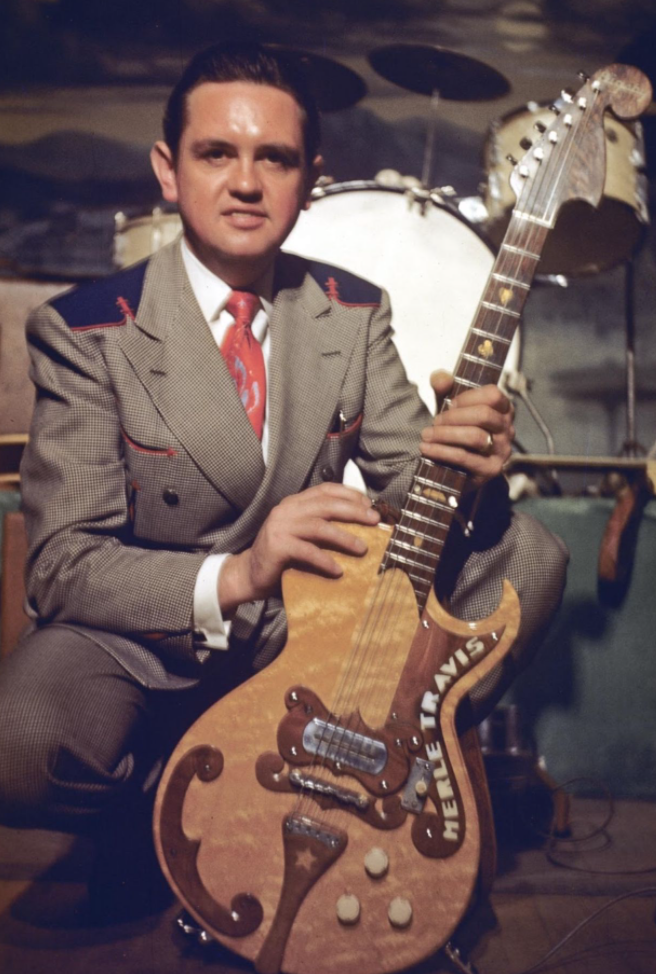In my opinion, Leo Fender is the father of the electric guitar. Not much has changed from his original amps and electric guitars and shows you how revolutionary his designs were. Leo was brilliant in the sense that he took the time to listen and adapt to what the musicians were asking for and any critiques they had towards the gear available at the time. I've built my business on this one idea and have significantly benefited. Leo helped himself to what he believed were the best ideas out there and adapted them to his designs. These individuals played a huge role and deserve much credit as well. I will dedicate this post to some of those individuals who don't get much love in the guitar world but should.
George Fullerton
When he moved to California, George met Leo and opened up a rival electronics shop across Leo's repair shop. They were competitors, but soon Leo convinced the younger man to come work for him. Unlike Leo, George was a pretty good guitar player, which came in handy once they got into the nuance of designing the electric guitar. He sketched outlines of the body, cut a few shapes trying to find the best shape and balance. Along with Fender, George Fullerton helped design the prototype that eventually led to the Esquire, Telecaster, Stratocaster, and so on. They would stay friends, and after the sale of Fender to CBS, they moved on to start Music Man and then G&L, which stands for George & Leo. The dude is a legend.
Paul Bigsby
Bigsby was an American inventor, designer, and master craftsman. Bigsby is best known for being the Bigsby vibrato tailpiece designer we all love and hate. He Built Merle Travis his first electric guitar and likely influenced the Esquire later produced by Fender. In 1954, Fender started advertising the Stratocaster, which featured a similar headstock design to Bigsby's Merle Travis design and featured a new "Tremolo-Action" lever. When Paul Bigsby saw the 'Stratocaster' brochure,' he yelled, "that son of a bitch" ripped me off.
Merle Travis
Paul Bigsby and Merle Travis were close buddies; they bonded over motorcycles and music. Travis would challenge Bigsby to build him wild new devices for his guitars. As a standard guitar player, Travis was sick of all the attention electric steel guitar players would get simply because the instruments were louder (this was a familiar feeling with a few other guitar players at the time). Travis wanted a solid electric guitar with the same height and width as an acoustic guitar but not the depth. He drew up a detailed sketch and handed it to Bigsby. Once finished, it was a beautifully crafted, solid-body electric guitar. It started receiving lots of attention, and one of them was Leo Fender. Believe it or not, Leo asked if he could borrow Merle Travis’s new guitar, and amazingly, Travis agreed. Fender would deny this for the rest of his life.
Don Randall
The fledgling Fender company owed so much of its early success to Randall’s sales skills.
Under Randall’s marketing genius, organizational expertise, and senior partnership with Leo Fender, Fender Sales grew steadily throughout the 1950s and thrived well into the 1960s on an international scale.
Randall is the one who came up with the name Esquire, Broadcaster, Telecaster, Stratocaster, Precision Bass (with Leo Fender), Twin Reverb, Bassman, and others.
Randall also spoke for Fender in the 1964 negotiations that resulted in the company’s sale to CBS; he subsequently became vice president and general manager of the Fender Musical Instrument and Fender Sales divisions of CBS until he departed from the company in 1969.
In the 1970s, he founded Randall Amplifiers.
Esther Fender
She endured years of sacrifice while Leo Fender established his radio shop and instrument company. Esther contributed her salary as a telephone operator to Leo’s businesses while adhering to a strict family budget. They never had any children, and there’s not much information on her, but she was such an essential piece of the whole thing. Esther and Leo traveled the world and seemed to enjoy their later years. She ultimately lost her battle with lung cancer and died at the age of sixty-five. When Leo passed, he was buried next to her.
The Birth of Loud
Man thought I knew my guitar history, and then I picked up this book. It's full of goodies any guitar enthusiast will love. Ian does a beautiful job of covering the Fender Vs. Gibson era, and I'll cover some of it in a future blog. I highly recommend this book, you guys!
You can get it Here.
*I have no relation to the author and just wanna push this because its so good! You can get it







